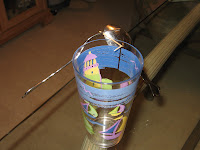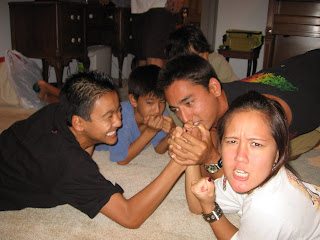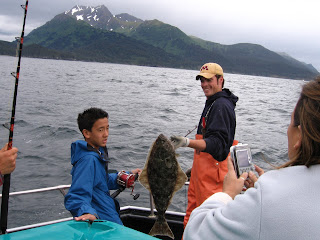
Riding a Ripstik involves angular momentum. You start out with zero momentum because you're not actually spinning. When you twist your upper body one way, your legs and the board rotate in the opposite direction to keep the angular momentum equal to zero. I'm not sure if you can really see it in the picture, but my brother's body is rotating to the left, so his lower body and the Ripstik rotate (sort of) to the right. Momentum is conserved because there is no external torque acting on you.
















